#primary cancer cells
Explore tagged Tumblr posts
Text
Role of Tissue Culture in the Study of Cancer

For the case of primary cancer cell cultures, fresh surgically resected tissue is used to develop ex vivo cell populations. While the most widely used culture method for studying cancer, especially in preclinical assays employs the use of immortalized cell lines. However, the process of transformation makes the accuracy of these models questionable, and hence, whether the actual cancer behavior is represented by these models becomes a question.
#cell ka diagram#benefits of tissue culture in cancer research and treatment#primary cell culture#cancer cell culture#cancer cell lines for research#role of tissue culture in the study of cancer#primary cancer cell culture#importance of cell culture#primary cancer cells#why cell culture is important#cancer cell culture techniques#cell culture importance#cell culture in cancer research#use of cell culture in cancer research#cell ka drawing
0 notes
Note
Would you say the kidneys are still the main bottleneck on extending a cat's lifespan? Are you aware of any new inroads made on keeping those going longer for them? I just lost one of my boys to chronic kidney disease. I fought so hard, but the damage was already there when I got him at 12 years old so I'm pretty sure it was a matter of time regardless of my management. I guess I'm hoping there's new knowledge to be had on helping other cats with this.
I'm so sorry for your loss.
Yeah, I'd say that kidney disease is still the primary cause of death in cats. Cancer isn't THAT far behind and I think there's a lot more heart disease than we suspect. Cats generally aren't screened for heart conditions so I'm guessing a lot of 'we didn't even know he was sick; he just died one day' stories are actually heart related events.
The biggest improvement that I've heard of lately was the experimental AIM vaccine produced in... I think 2018? 2019? Something like that. The theory is that a protein called AIM (apoptosis inhibitor of macrophage) helps mark waste products so that cleaner cells know 'hey, clean this up'. This could hypothetically mark excess waste in kidneys and help flush it out, keeping the kidneys functional longer. I don't fully understand the vaccine process--- I know that all animals already have AIM but it's apparently less functional in cats compared to people.
The largest trial is supposedly going on right now and should be wrapping up pretty soon.
I've also been keeping an eye on this cat food that has AIM in it. I'm unclear on how the jump was made from vaccine to pet food.
160 notes
·
View notes
Text
What is immunocompromisation?
Being immunocompromised means you have a weaker immune system than most people. There are two main ways people become immunocompromised
1. Medical Conditions
Certain medical conditions cause your immune system to be weaker. Some examples include:
Immunodeficiencies- A category of conditions causing a lower number of or lower efficacy of immune cells. This category is divided into two subcategories: primary immunodeficiency and secondary immunodeficiency. Primary immunodeficiency is a subcategory consisting of hundreds of different conditions all causing a lower number of immune cells. Secondary immunodeficiency is a smaller category consisting of conditions where a person lacks immune cells due to other causes such as malnutrition.
HIV/AIDS
Some cancers
2. Medications
There are two main types of medications that result in being immunocompromised: Immunosuppressants and chemotherapy
Immunosuppressive medications- Immunosuppressive medications are medications designed to suppress your immune response. These can work in many different ways with some targeting a broad range of immune cells and others being highly specific. These medications are often used for organ transplant recipients and people with moderate-severe autoimmune diseases. Some medications in this category include: organ transplant medications, biologics, and high dose corticosteroids
Chemotherapy- Chemotherapy often comes with the effect of preventing new fast-dividing cells from being produced. This is why hair loss is such a common side effect of chemotherapy. Immune cells are fast dividing and therefore frequently are unable to be produced while on chemotherapy
The effects of immunocompromisation
Immunocompromisation has a large range of effects depending on the reason someone is immunocompromised. The most common effects are an increased susceptibility to illness and cancers. Increased susceptibility to illness can look like:
Frequent illnesses
Illnesses that are more severe than they would be for other people
Recurrent infections
Infections that don't respond to medication
Delayed response to infection
Infections that last longer than usual
Some people are more susceptible to certain types of infections. For example anifrolumab, a biologic used for lupus, makes people more susceptible to herpes zoster and respiratory tract infections while prednisone, a corticosteroid, increases risk of infection across the board. This occurs due to different causes of immunocompromisation affecting different immune cells with different roles in preventing and responding to infection.
Grades of severity
Recently the term "moderately and severely immunocompromised" has been used in covid-19 resources. Certain factors are considered to make someone moderately or severely immunocompromised, these include:
Advanced or untreated HIV infection
Moderate or severe primary immunodeficiencies
Hematologic malignancies
Active treatment for solid tumors or hematologic malignancies
Immunosuppressant medications used for solid organ or islet transplants
CAR-T cell therapy or hematopoietic stem cell transplantation
Treatment with alkylating agents, antimetabolites, high-dose corticosteroids, chemotherapeutic agents, TNF blockers, and other biologic agents that are immunosuppressive or immunomodulatory
What immunocompromisation is not
It's worth noting that getting sick frequently or getting seriously sick from illnesses that are usually mild is a warning sign for being immunocompromised but does not inherently make you immunocompromised. Some people are just more susceptible to illness without being immunocompromised.
Having minimal response to an infection that is usually more serious is a sign of a strong immune system, not a weak one.
Being immunocompromised is also not the same as being high risk for serious infection. All immunocompromised people are high risk but not all high risk people are immunocompromised. Immunocompromisation is specifically when someone is high risk because their immune system is weak. Particularly in regards to covid, there are many conditions that make you higher risk that do not involve a weak immune system.
Autoimmune diseases do not automatically make you immunocompromised. Something being a disorder of the immune system does not mean that you are immunocompromised because immunocompromised means a weaker immune system not a malfunctioning immune system.
#someone in my notes was claiming fibromyalgia makes you immunocompromised#heres some info about what being immunocompromised actually is#chronic illness#chronically ill#cripple punk#cripplepunk#physical disability#physically disabled#immunocompromised#immunocompromisation
165 notes
·
View notes
Text
Please don't skip!
Please help my family 🇵🇸
🫂Family needs financial help in Gaza! Mother suffers from cancer🫂

Dear compassionate souls,
I write to you today with a plea that weighs heavily upon my heart. My name is Saed, a lawyer and musician from Gaza—a region tragically engulfed in the relentless flames of conflict. Amidst the chaos, my family has become ensnared, facing imminent danger and desperation beyond words.
My journey began as I traveled to Egypt to stand by my beloved mother during her grueling battle with cancer, a fight that commenced back in 2020. My mother has been battling this relentless disease for nearly five years. She underwent surgery to remove the tumor, but unfortunately, the operation was not entirely successful, as the tumor could not be fully removed. As a result, the cancer cells spread to other areas, affecting her bladder and rectum. This has caused her immense suffering over the years. She endured intense chemotherapy sessions, which took a severe toll on her overall health. Currently, she is receiving immunotherapy treatment. It is fortunate that the primary treatment, immunotherapy, is covered by the Palestinian Ministry of Health. However, some of the regular tests and imaging scans we need to monitor her condition are not covered.
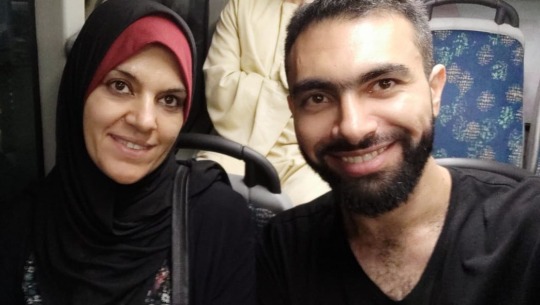

On December 3, 2023, our family home was mercilessly destroyed, further exacerbating our already dire situation. Trapped within the war-torn confines of Gaza, my father Akram (71 years old), sister Wajd (21 years old), and brother Mahmoud (33 years old) found themselves clinging to survival amidst the rubble of our once cherished home. The harrowing ordeal of narrowly escaping the bombing left them seeking refuge in a shelter in the northern reaches of the Gaza Strip.
After

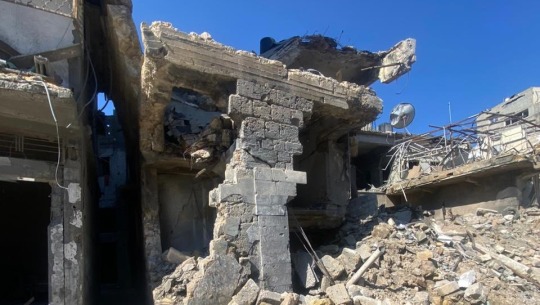
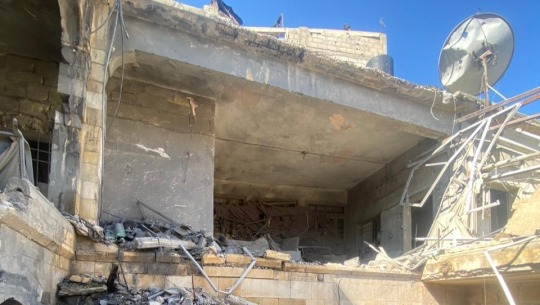
Before


During these tumultuous circumstances, we face a severe lack of funding. As I mentioned previously, I am currently residing in another country to support my mother, whose cancer treatment requires additional procedures not covered by the Palestinian Ministry of Health.
Your support in this critical hour is more than a mere act of kindness; it is a beacon of hope amidst the darkness of despair. Each contribution, no matter how small, serves as a lifeline, offering the promise of safety and the prospect of a brighter tomorrow.
With deep gratitude and unwavering hope, I extend my sincerest appreciation to you for your generosity, compassion, and unwavering solidarity in our shared humanity.
In solidarity and gratitude,
Saed
#free gaza#free palestine#please help#donations#home#painting#digital illustration#sketch#portrait#digital painting#animation#kitty#digital art#drawing
63 notes
·
View notes
Text
Though one in two people will develop some form of cancer in their lifetime, there's still much we don't know about this disease. But thanks to continued research efforts, we keep learning more about the biology of cancer. One of these recent discoveries could even transform our understanding of how cancers develop. But before we talk about the new discovery, let's first discuss the classical theory that attempts to explain why normal cells become cancer cells. This theory posits that DNA mutations are the primary cause of cancers. It's well known that ageing, as well as some lifestyle and environmental factors (such as smoking and UV radiation) cause random DNA mutations (also known as genetic alterations) in our cells. Most genetic alterations trigger cell death or have no consequence.
Continue Reading.
62 notes
·
View notes
Text
Submitted via Google Form:
How reckless could a race of people be if they could heal rapidly? If someone got hit by a car in real life and needed a few months to start walking again, and over a year to do anything like martial arts again, for these people, they'd be walking in a few days and doing martial arts in two weeks. If they would die on impact, then yes, they would die. If they would die in an ambulance, it depends but they would still have a chance. In real life, cuts that take a few days to heal will be healed in several minutes. They definitely do feel pain of course, but as a whole, the general populace has pain tolerance just below those of elite athletes in the real world. I'm imagining these people might be the daredevil type.. could it be very common to get cuts and bruises, not strange to see some of the worst kids or teens getting cut nearly every single day, multiple times a day. I mostly want to focus on the injured = not a big deal bit. Or getting injured as part of normal daily life. But what else might this affect? More surgeries happening because people decide the recovery time isn't an issue (doesn't eliminate other factors of course) How about piercings? If someone goes half a day without piercings, their hole would close. Maybe... medicine that stops the healing process? But how expensive could those medicines be vs getting pierced again?
Tex: So there’s this plant, called plantain. One of the common varieties is known as Plantago major. One of its primary uses in herbal medicine is to heal wounds - and it’s very good at it!
A little bit too good, unfortunately, and it often comes with a warning to clean out wounds first before applying it, because it has the tendency to work so quickly at encouraging skin to knit back up that infections can easily be sealed underneath. This is a problem, because in order to heal the infection, the skin must be cut back open, lest someone risk the infection spreading to the blood and causing sepsis (if not, in bad cases, necrosis).
“Super healing” has many of the same flaws. In practice, the process of healing is rather complex, and while there is some overlap in steps (excess blood cleared away, immune system response to pathogens, phagocytosis, signals sent to regenerate broken tissue or other affected organs), doing too much of only one process can have detrimental effects on the patient in question. It’s the reason why in first aid you clean a wound first, then apply medicines, then apply bandages.
Things like bones, and the squishier bits called organs, take time to heal, because they’re not only reallocating resources to grow new cells (i.e. neurogenesis, osteogenesis, etc), they’re also going through the entire pathway of fighting infections (i.e. B cells, T cells, etc) and checking for cancerous markers of cells that duplicated incorrectly (uncommon, but non-zero possibility). It’s a lot, lot more than “add calcium to bone” or “make skin whole”.
Regeneration of tissue is also rather itchy, and uncomfortable. That, barring anything else, is going to make a lot of people think twice about how many injuries they’re willing to risk. Compounding injuries compounds the discomfort, and most people wish to avoid being uncomfortable if there’s any other option for a situation.
On top of that, rapid regeneration would require a large amount of resources for both calories and micronutrients. This translates to being hungry all the time. Humans can generally heal quickly with a good diet and enough sleep (the brain regulates the flushing of metabolic waste during sleep, Patel et al.), which is why it’s seen as a good sign for hospital patients to have an appetite and also to have a regular sleep schedule.
You can handwave as much of this as you like in your worldbuilding, but to borrow SAW’s general rule, “you break it, you bought it” in terms of internal consistency.

23 notes
·
View notes
Text
mRNA vaccines have gained widespread attention for their crucial role in fighting the COVID-19 pandemic. Yet, even before the pandemic, researchers at Memorial Sloan Kettering Cancer Center were investigating the potential of mRNA vaccine technology in the fight against cancer.
Leading this innovative research is Dr. Vinod Balachandran, a physician-scientist associated with the David M. Rubenstein Center for Pancreatic Cancer Research, the Human Oncology and Pathogenesis Program, and the Parker Institute for Cancer Immunotherapy.
Dr. Balachandran's groundbreaking efforts have paved the way for a clinical trial focused on using mRNA vaccines to treat pancreatic cancer, offering new hope to patients confronting this challenging disease.
Neoantigens in Pancreatic Tumors
At the heart of this innovative approach lies the concept of neoantigens, proteins found within pancreatic tumors that serve as alarm bells, alerting the immune system to the presence of cancer cells. These neoantigens play a pivotal role in rallying the immune response to keep pancreatic cancer at bay.
Unlike traditional vaccines, which are one-size-fits-all, these mRNA vaccines are tailored to each individual, with the aim of stimulating the production of specific immune cells known as T cells. These T cells are trained to recognize and target pancreatic cancer cells, reducing the risk of cancer recurrence following surgical removal of the primary tumor.
Intriguingly, the results of this groundbreaking research have shown remarkable promise. Among the 16 patients studied, eight experienced activation of T cells that recognized their own pancreatic cancers.
Importantly, these patients demonstrated delayed recurrence of their pancreatic cancers, providing tantalizing evidence that the T cells activated by the vaccines may be effectively holding the cancer at bay.
Dr. Balachandran's work in pioneering mRNA vaccines for pancreatic cancer received a significant boost through collaboration with BioNTech, the company responsible for developing the Pfizer-BioNTech COVID-19 vaccine.
When asked about the inspiration behind using a vaccine to combat pancreatic cancer, Dr. Balachandran explained, "There has been great interest in using immunotherapy for pancreatic cancer because nothing else has worked very well. We thought immunotherapy held promise because of research we began about seven years ago."
This research, spanning seven years, revealed that a select group of pancreatic cancer patients managed to defy the odds and survive after tumor removal surgery. Upon close examination, it was observed that these tumors harbored an unusually high number of immune cells, particularly T cells.
These immune cells were drawn to the tumors by signals emitted from within. These signals, as it turned out, were neoantigens—proteins that T cells recognize as foreign invaders, prompting an immune system assault on the cancer.
Even more intriguing was the discovery that T cells recognizing these neoantigens persisted in the bloodstream of these fortunate patients for up to 12 years after tumor removal.
This sustained immune response resembled an autovaccination, with T cells retaining a memory of the neoantigens as a threat, akin to the way vaccines confer long-term protection against pathogens. This finding sparked the idea of artificially inducing a similar effect in other pancreatic cancer patients.
Unlocking the Potential of mRNA Vaccines
To understand how mRNA vaccines can combat pancreatic cancer, one must delve into their intricate mechanisms. Dr. Balachandran and his team published their findings on immune protection in long-term pancreatic cancer survivors in the prestigious journal Nature in November 2017. During this time, they were also exploring methods to deliver neoantigens to patients in the form of vaccines, with a particular focus on mRNA vaccines.
Unlike traditional vaccines, which introduce weakened or inactivated pathogens into the body, mRNA vaccines leverage a piece of genetic code known as messenger RNA (mRNA).
This genetic code instructs cells in the body to produce a specific protein, thus triggering an immune response. Coincidentally, BioNTech's co-founder and CEO, Uğur Şahin, expressed interest in the research conducted by Dr. Balachandran's team, initiating a collaboration that would prove pivotal.
In late 2017, Dr. Balachandran and his team journeyed to Mainz, Germany, where BioNTech is headquartered. Over dinner, they discussed the potential of mRNA vaccines in the context of pancreatic cancer treatment. This marked the beginning of a journey that held immense promise for cancer patients worldwide.Scientist, CEO and co-founder of BioNTech Ugur Sahin. (CREDIT: BERND VON JUTRCZENKA/POOL/AFP via Getty Images)
The intricacies of designing an effective cancer vaccine are manifold. Given that cancer arises from the body's own cells, distinguishing proteins in cancer cells as foreign entities is a formidable challenge for the immune system. Nevertheless, advances in cancer biology and genomic sequencing have paved the way for the design of vaccines capable of discerning the difference.
Dr. Balachandran's team, in conjunction with BioNTech and Genentech, capitalized on these advances, recognizing the critical role played by tumor mutations in triggering immune responses. Their optimism in the potential of mRNA vaccines for pancreatic cancer was well-founded, setting the stage for their groundbreaking research.
Personalized mRNA Vaccines: A Tailored Approach
The personalized nature of mRNA vaccines for pancreatic cancer is a testament to their efficacy. After a patient undergoes surgical removal of a pancreatic tumor, the tumor is genetically sequenced to identify mutations that generate optimal neoantigen proteins—those that appear most foreign to the immune system.
Subsequently, an mRNA vaccine is meticulously crafted, containing the genetic code specific to these neoantigens present in the individual's tumor.
During the vaccine production process, patients receive a single dose of a checkpoint inhibitor drug. This combination is intended to enhance the immune response to tumors. Once the mRNA vaccine is administered into the bloodstream, it prompts dendritic cells—an essential component of the immune system—to produce the neoantigen proteins.
These dendritic cells simultaneously educate other immune system components, including T cells, to recognize and attack tumor cells bearing the same neoantigen proteins. With T cells primed to seek out and destroy cells displaying these proteins, the chances of cancer recurrence are diminished.
Overcoming Challenges: The Road to Success
The road to realizing personalized mRNA vaccines for pancreatic cancer was fraught with challenges, not least of which was the complexity of the manufacturing process. Unlike mass-produced vaccines like those for COVID-19, the mRNA cancer vaccine had to be custom-made for each patient based on the unique characteristics of their tumor.Neoantigens are an important feature of cancer cells and help to stimulate anti-cancer immune responses. (CREDIT: Technology Networks)
This necessitated an intricate series of steps, including the surgical removal of the tumor, shipping the tumor sample to Germany for sequencing, manufacturing the vaccine, and returning it to New York—all within a tight timeframe.
Thankfully, Dr. Balachandran's team and their collaborators rose to the occasion, successfully enrolling the target total of 20 patients nearly a year ahead of schedule. Their unwavering dedication and meticulous planning ensured that the personalized mRNA vaccines could be provided to those in dire need.
As if the hurdles of personalized vaccine production weren't enough, the emergence of the COVID-19 pandemic added an unprecedented layer of complexity to the clinical trial. Dr. Balachandran and his team recognized the urgency of adapting swiftly to ensure that patients were not adversely affected.
Under the leadership of Cristina Olcese and with the unwavering support of individuals such as Department of Surgery Chair Jeffrey Drebin and Hepatopancreatobiliary Service Chief William Jarnagin, the team orchestrated the logistics required to maintain the trial's momentum.
Remarkably, what was initially estimated as a two-and-a-half-year trial was completed in a mere 18 months. The tireless efforts of Dr. Drebin, Medical Oncologist Eileen O'Reilly, Physician-Scientist Jedd Wolchok, Biologist Taha Merghoub, Computational Biologist Ben Greenbaum, and the support from Stand Up 2 Cancer/Lustgarten Foundation were instrumental in making this trial a reality amidst the challenges posed by the pandemic.
A Bright Future for mRNA Vaccines in Pancreatic Cancer Treatment
The recent findings from this pioneering research offer a beacon of hope for patients grappling with pancreatic cancer. Dr. Balachandran affirms that "an mRNA vaccine can trigger the production of T cells that recognize pancreatic cancer cells."
The prospect of personalized vaccines enlisting the immune system in the fight against pancreatic cancer—a disease in dire need of improved treatments—holds tremendous promise. Moreover, these developments may extend their impact to other forms of cancer as well.
Looking ahead, Dr. Balachandran and his team are committed to further analyzing the data obtained from the clinical trial. This analysis will provide valuable insights into the factors that facilitate the vaccine's efficacy in patients. Armed with this knowledge, they aim to refine the vaccines to make them more effective and applicable to a broader spectrum of pancreatic cancer patients.
In a testament to the forward-thinking vision of the Memorial Sloan Kettering Cancer Center, this pioneering work exemplifies their commitment to bringing cutting-edge treatments to cancer patients.
Through their partnership with BioNTech and Genentech, and with the support of Stand Up 2 Cancer/Lustgarten Foundation, a larger study is already in the pipeline, aiming to test personalized mRNA vaccines in a more extensive cohort of pancreatic cancer patients.
As Dr. Balachandran notes, they were at the forefront of mRNA vaccines before their popularity surged, leveraging scientific discoveries to make a tangible impact on patients' lives. The future indeed looks brighter for those facing the formidable challenge of pancreatic cancer, thanks to the relentless pursuit of innovation in the field of mRNA vaccines.
Key Takeaways
Some people with pancreatic cancer survive many years after diagnosis.
In these patients, the immune system keeps the cancer from returning.
A messenger RNA vaccine based on this concept is being tested in combination with another type of immunotherapy.
Early results suggest the vaccine is having the desired effect on the immune system.
15 notes
·
View notes
Text
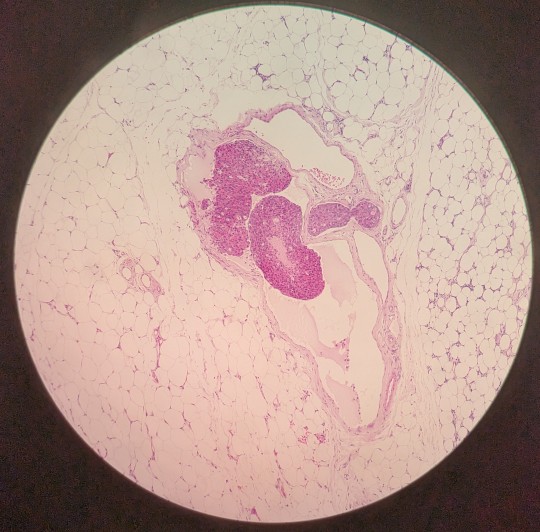
Beautifully obvious metastatic emboli from an adenocarcinoma. It's not very often you get to see obvious metastases on histology section.
Metastasis is the process of a cell leaving it's primary site of origin or original mass, entering a blood or lymphatic vessel, and exiting the vessel at a distant site to colonise a new tissue. This process only occurs in malignant tumours (cancers).
Many factors are required for a tumour cell to be able to detach from the main mass, penetrate through basement membranes, migrate through extracellular matrix, invade vessels, evade the immune system, and establish and grow within a new tissue including integrins, growth factors, proteases (e.g. matrix metalloproteinases) and antiproteases, vimentin, adhesion molecules, and down regulation of cytokeratin expression and intercellular adhesion structures. If a tumour cell does not possess at least one of these capabilities to survive the process, then successful metastasis is not possible.
38 notes
·
View notes
Note
If you’re up to it, can you explain a bit more about them finding endo in men? It’d be much appreciated.
I'm guessing this is asking about endometriosis in men? If so, then yes!
Endometriosis is a disease where "tissue resembling endometrial glands [e.g., uterine tissue]" grows in places it shouldn't. Very rarely, it can occur in men.
To understand how and why, you first have to understand how humans develop from an embryo to an infant [1]:
Very early in development, every fetus has "neutral embryonic structures" that will later become the primary sex organs. These structures are called the Müllerian ducts (which are the precursor for female organs) and Wolffian ducts (which are the precursor for male organs).
These neutral structures will "become feminized unless masculinizing influences come into play at key times during gestation". In other words, unless instructed otherwise, the Wolffian (male) ducts will atrophy and the Müllerian (female) ducts develop into the sex organs. However, a healthy male fetus will excrete chemical signals that instead initiate the male sexual differentiation: atropying the Müllerian (female) ducts and developing the Wolffian (male) ducts.
(Major disruptions in this process are what results in disorders/differences in sex development/intersexism.)
So how does this relate to endometriosis in men [2]?
The "most congruent" of this condition is the "embryonic cell rest theory". This theory proposes that "while in the majority of males the Müllerian tissue atrophies completely, Müllerian cells may rarely persist ... when imperfect dissolution occurs".
Later, prolonged, exposure to estrogen (via estrogen therapy for prostate cancer, liver cirrhosis, obesity, etc.) causes these cells to "further differentiate into endometrial tissue and lead to the development of endometriosis".
Importantly, this is not evidence of "female sex organs" in men. In rare circumstances, humans can grow tissue in an incorrect place (e.g., liver tissue outside the liver, brain tissue outside the brain, etc.) which are called teratomas. Despite this these individuals are not considered to have "two livers" or "two brains". They simply have improperly differentiated tissue. [3]
I hope this helps you, Anon!
References under the cut:
Utiger, R. (2018, December 3). Sexual differentiation . Britannica; Britannica. https://www.britannica.com/science/sexual-differentiation
Rei, C., Williams, T., & Feloney, M. (2018). Endometriosis in a man as a rare source of abdominal pain: A case report and review of the literature. Case Reports in Obstetrics and Gynecology, 2018, 1–6. https://doi.org/10.1155/2018/2083121
Teratoma: When germ cells go rogue. (2023, September 19). Cleveland Clinic; Cleveland Clinic. https://my.clevelandclinic.org/health/diseases/22074-teratoma
8 notes
·
View notes
Text
Arthritis and Cancer (and smoking, and pre-workout)
Arthritis.org, CancerResearchUK, HCAFloridaHealthCare.com on Smoking
Here are some Research Links that serve as a counter-balance to what I'm about to type. All of them share things, And None of them will validate the Hypothesis I'm putting forward.
A little while ago, somebody contacted me about my Arthritis and suggested I start researching this in order to provide [Jumping Off Points] so that they can put forth new research studies that are counter to the Norms.
A lot of what I'm writing here is not for Private Consumption and should not be taken as fact over the advice of their HealthCare providers.
Now that I've Stated that;
What *is* Arthritis?
Arthritis is characterized by an "Over-Active Immune Response". Increased production of T-Cells, that tend to result in inflammation all over the body.
The standard regimen of Medications tens to exacerbate that effect. Humira (what I've been prescribed) attacks that immunological responses in order to reduce the inflammation.
Other regular medications NSAIDs and Pain Relievers attack the Inflammation itself. Severe Arthritis can no longer be controlled by the medications to reduce Inflammation and people who can afford it are placed on similar medication to Humira.
Why does this Matter?
Arthritic people are more likely to develop cancer. so the question here is *why?* The accepted reasoning is because of a weakened Immune response.
How can Arthritis be an Over-Active AND and under active immune response?
The Idea put forth; Perhaps the overactive immune system is *caused* by a persistent infection; or the burgeoning cancer that the body is trying to eradicate.
Which would explain both of those conditions. As Cancer tends to appear in people with weakened immune systems; And simultaneously... Creates a condition in which the Immune System starts attacking the person's body.
People on Humira and have Arthritis have a highly increased risk to all sorts of common diseases that we don't worry about in the modern world. including Cancer.
How about that...
But what about smoking?
The White Pleghm coughed up as part of recovering from an infection, researchers (whom I'm affiliated with but aren't willing to vocalize) have connected these dirty Pleghms as potentially "Dead Cancer Cells"
After my previous post linking Scabbing, Scarring, and Lung health; they pushed harder for me to write this post.
Smoking increases your body's Immunological response; which can cause Arthritis by itself.
For me; my Doctors initially assumed I was a Chronic Smoker when making this Diagnosis, despite all my records saying otherwise.
It's a primary assumption by medical personnel that every member that has health issues is an Alcoholic or Chain Smoker. My Smoking Habit didn't start until recently.
Which means it negates that observation entirely.
Well. Maybe not in the future, but we'll see.
With Pre-workout, and vitamin B3 especially; we see a small variation of this increased immune response in what we've called "Niacin Flush".
A temporary effect that causes a fast Immunological response... Which has been suggested to be a sort of "Diagnostical Response" allowing the Immune System to quickly check the entire body for foreign bacteria.
There also seems to be a link between Gastro-Intestinal Disorders and Arthritis. Suggesting that Arthritis starts in the Gut itself.
There's ALSO been a suggestion put forth about "Smokers Cough" actually being a form of Pertussis; or flu.
Because we have linked the Cough to Smoking instead of Foreign Objects in the Body.
Historically; before the intense fear about Cancer; people would use Tobacco and Smoked Drugs similar to how we might drink tea or eat cough drops. Basically: When they had a Cough they would smoke. So their theory goes; Because people were smoking when they felt sick, we equated Smoking with causing the Sickness.
What we're looking at here is how all this combines together.
Another Theory placed forth by the "Man with the Golden Blood" which has helped Mothers give birth to Babies with incompatible blood types. Suggests that the Mother creates an immune response towards her Fetus (Similar to how another person might have an increased immune response to Cancer)
<aside>Should a woman be forced to take the Anti-D medication during Fetal Complications simply because it's there? Should people like Golden Arm be forced to donate blood to create this medication because abortion is bad?
And even then; Is this Immunological response a sign of a bad relationship? Is this an evolutionary response to prevent Rape? Does this mean Rape is actually physiologically bad for everyone involved?
I'm not making a separate post on that because fuck that noise.</aside>
Here's the Hypothesis; Arthritis is a response to Cancer. And while Arthritis can cause complications which are remarkably similar to "Stone Man Syndrome"(where a person starts to literally fossilize while they are still alive) Does that mean the underlying reasoning for this is literally "because cancer?"
And If so .. does that mean medication that increases Immunological response; Like Cigarettes and Pre-Workout; can be used as a tool to eradicate diseases that may affect a person?
I'm writing this all out because there's an issue in the "World of Science" that prevents all these questions from being asked; and because of that we don't have answers for them.
We can't get answers for them because nobody in their right mind will fund the research for it.
So how do we get funding? Somebody important or with plenty of connections; or simply willing to participate in study at whatever the out-of-pocket costs for an over-the-counter drug might be.
They asked me to write this; so that my readers might be inspired to answer those questions that can't be asked in professional settings for professional reasons.
I hope we find the answers we need. No matter what they turn out to be.
7 notes
·
View notes
Text
Side Effects Of CAR-T Therapy
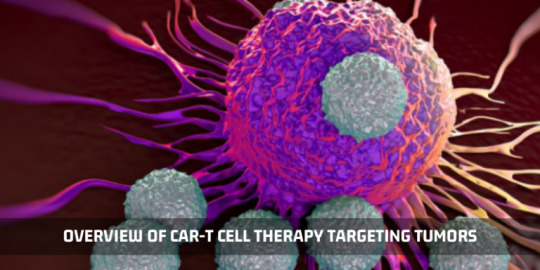
CAR-T therapy might cause cytokine release syndrome (CRS) that leads to fever, fatigue, low blood pressure, and breathing difficulties. Other general side effects of CAR-T cell therapy include headache, seizures, speech problems, and balance difficulties. The side effects generally start to improve gradually with proper treatment, care, and management.
#car t cell therapy#what is car t therapy#car t cancer treatment#cell therapy overviews#car t therapy for cancer#how does car t cell therapy work#Cell culture#customized primary cells#primary cells#biotech company#stem cells#exosomes#stem cell research center#regenerative medicine#bioengineering#Kosheeka
0 notes
Text
10 shocking stories the media buried today.
The Vigilant Fox
Oct 24, 2024
#10 - Doctors who defied the COVID narrative compile 18 alternative cancer treatments that WORK!
These interventions are not only backed by science, but most of them are affordable or completely free.
The first anti-cancer therapy is glucose management through a ketogenic diet. By drastically reducing carbohydrate intake, the ketogenic diet helps starve cancer cells of their primary fuel source, glucose, according to
The FLCCC Alliance
.
Second on the list is exercise. The report says that regular physical activity boosts immune function (critical for fighting cancer), reduces inflammation, and combats fatigue.
Vitamin D3 is also essential. The report says, “Low levels of vitamin D have been linked to an increased risk of cancer. Supplementing with vitamin D3 may support the immune system and help prevent cancer cell proliferation.”
One of the more interesting items on the list is the inclusion of Ivermectin and Fenbendazole. Ivermectin is believed to “interfere with cellular processes essential for cancer cell viability,” whereas Fenbendazole inhibits cancer cell division and induces cancer cell death.
Here are all 18 therapies ranked in order, as compiled by
The FLCCC Alliance
:
1. Glucose Management & Keto Diet
2. Exercise
3. Stress Reduction, Sleep, and Sunshine
4. Vitamin D3
5. Propranolol
6. Melatonin
7. Metformin
8. Curcumin (Nanocurcumin)
9. Ivermectin
10. Mebendazole/Fenbendazole/Albendazole
11. Green Tea
12. Omega-3 Fatty Acids
13. Berberine
14. Atorvastatin or Simvastatin
15. Sildenafil, Tadalafil, and Vardenafil
16. Disulfiram
17. Ashwagandha
18. Itraconazole
Read the full details about each treatment here.
4 notes
·
View notes
Text
Breast Cancer
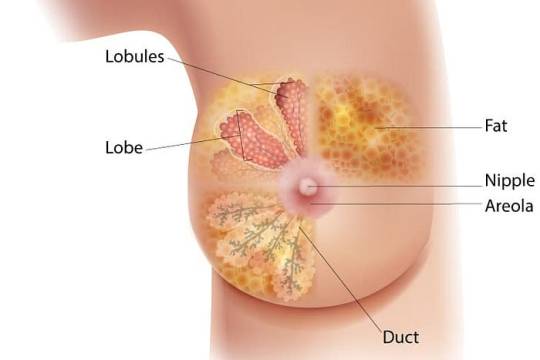
Introduction
Breast cancer, a multifaceted and prevalent disease, poses a significant health challenge globally, transcending gender lines with its potential impact. Characterized by the abnormal proliferation of cells within breast tissue, breast cancer’s complex etiology remains an area of intense study and concern. Despite notable advancements in medical science and increased awareness, it continues to be a leading cause of morbidity and mortality worldwide. This comprehensive discussion aims to delve into the intricacies of breast cancer, encompassing its causes, risk factors, prevention strategies, diagnostic modalities, treatment options, and the evolving landscape of supportive care.
Causes and Risk Factors
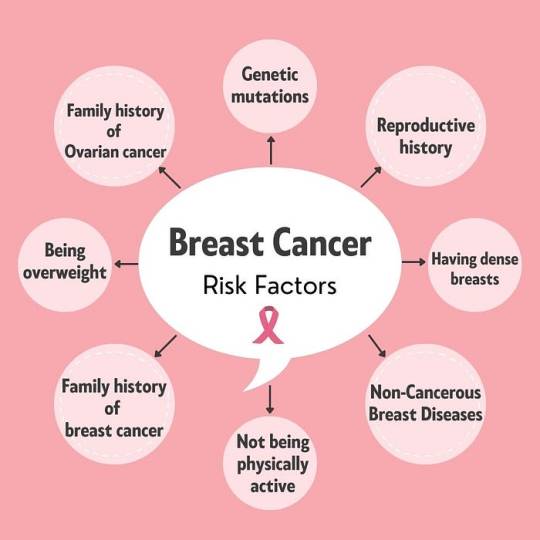
Understanding the underlying causes and risk factors associated with breast cancer is paramount in developing effective prevention and management strategies. While the precise etiology of breast cancer remains elusive, various genetic, hormonal, environmental, and lifestyle factors contribute to its onset and progression. Genetic predispositions, such as mutations in the BRCA1 and BRCA2 genes, significantly elevate the risk of developing breast cancer. Additionally, hormonal influences, including early onset of menstruation, late menopause, and hormone replacement therapy, play a crucial role in disease pathogenesis. Lifestyle factors such as excessive alcohol consumption, obesity, lack of physical activity, and exposure to environmental carcinogens further augment the risk profile.
Preventive Measures

Empowering individuals with knowledge about preventive measures is essential in mitigating the burden of breast cancer. Promoting regular breast self-examinations, clinical breast examinations, and mammographic screenings facilitates early detection and intervention. Emphasizing lifestyle modifications, including maintaining a healthy weight, adopting a balanced diet rich in fruits and vegetables, limiting alcohol intake, and engaging in regular physical activity, can reduce the risk of breast cancer. For individuals with a heightened risk due to genetic predispositions or familial history, prophylactic surgeries, such as mastectomy or oophorectomy, and chemo preventive agents offer viable preventive options.
Diagnostic Modalities
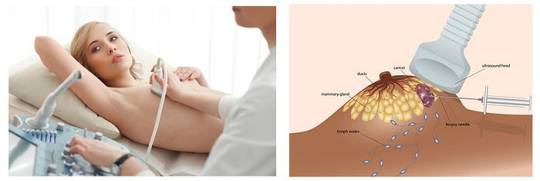
Advances in diagnostic modalities have revolutionized the early detection and diagnosis of breast cancer, enabling prompt initiation of treatment and improved clinical outcomes. Mammography remains the cornerstone of breast cancer screening, capable of detecting abnormalities such as microcalcifications, masses, or architectural distortions. Complementary imaging techniques, including ultrasound, magnetic resonance imaging (MRI), and molecular breast imaging (MBI), enhance diagnostic accuracy, particularly in women with dense breast tissue or high-risk profiles. Biopsy procedures, such as core needle biopsy or surgical excision, facilitate histopathological examination, enabling precise diagnosis and classification of breast lesions.
Treatment Options

Tailoring treatment strategies to individual patient characteristics and disease parameters is essential in optimizing therapeutic outcomes in breast cancer. The treatment landscape encompasses a multidisciplinary approach, integrating surgical, medical, and radiation oncology interventions. Surgical options range from breast-conserving surgeries, such as lumpectomy or segmental mastectomy, to radical procedures like total mastectomy or modified radical mastectomy, depending on tumor size, location, and extent of spread. Adjuvant therapies, including chemotherapy, hormonal therapy, targeted therapy, and immunotherapy, aim to eradicate residual disease, prevent recurrence, and improve overall survival. Radiation therapy, administered either postoperatively or as a primary modality in selected cases, targets residual tumor cells, minimizing locoregional recurrence rates.
Supportive Care and Survivorship

Recognizing the holistic needs of breast cancer patients and survivors is integral in promoting comprehensive care and ensuring optimal quality of life. Supportive care interventions, including symptom management, psychosocial support, nutritional counseling, and rehabilitation services,��address the multifaceted challenges associated with cancer diagnosis and treatment. Survivorship programs, focusing on survivorship care planning, surveillance for recurrence, long-term monitoring of treatment-related complications, and health promotion initiatives, facilitate the transition from active treatment to survivorship. Engaging patients and caregivers in survivorship care planning fosters empowerment, resilience, and a sense of agency in navigating the post-treatment phase.
Conclusion
In conclusion, breast cancer represents a formidable health challenge with profound implications for affected individuals, families, and communities worldwide. While significant strides have been made in understanding its pathophysiology, enhancing diagnostic capabilities, and expanding treatment options, concerted efforts are warranted to address existing gaps in prevention, early detection, and access to care. By fostering collaborative partnerships among stakeholders, advocating for evidence-based interventions, and promoting health equity, we can strive towards a future where breast cancer incidence and mortality rates are substantially reduced. Through continued innovation, education, and advocacy, we can transform the landscape of breast cancer care, offering hope, support, and healing to those impacted by this pervasive disease.
We wish you all the best in your medical education journey. In case you need any guidance or assistance during the learning process, do not hesitate to reach out to us.
Email at;
#fullmetal alchemist#healthcare#medical students#assignment help#puppies#aesthetic#ratblr#kittens#pets#plants#nursing student#nurse#nursing school#home nursing services#doctor who#fourteenth doctor#14th doctor#tenth doctor#medicine#medication#pharmacy#big pharma#pharmacy colleges#pharmacy student#pharmacy services#pharmacy school#pharmacy technician#health and wellness
11 notes
·
View notes
Text
Why Exercise Is Important
Did you know that even one hour per week of moderate-intensity aerobic exercise can significantly reduce your risk of developing heart disease? Exercise is considered the single most effective way to improve physical health, increase energy levels, maintain a healthy weight, and prevent chronic illnesses. A study published in the Journal of the American Medical Association (JAMA) found that just two years of regular moderate-intensity aerobic exercise reduced the risk of death from all causes by 13 percent.
If you're a busy professional juggling work, family life, and personal obligations, exercise can seem like a daunting task. But even short bursts of exercise throughout the day or a few days a week can have significant positive health impacts. Regular exercise has been linked to reduced risk of developing type 2 diabetes, hypertension (high blood pressure), and certain types of cancer.
Here are some reasons why regular exercise is such a great investment for your physical and mental well-being:
Improves Cardiovascular Health One of the primary benefits of exercise is improving cardiovascular health, which refers to the heart's ability to pump blood around the body efficiently. Regular aerobic exercise helps increase heart rate and oxygen consumption, leading to greater levels of energy and reduced fatigue during physical activity. A 2016 study published in the Journal of Physiology found that individuals who exercised regularly for five years had a 37 percent lower risk of developing type 2 diabetes than those who didn't exercise.
Boosts Metabolism and Fat Burning Exercise helps increase levels of insulin, which regulates blood sugar levels in the body. High levels of insulin can lead to excess body fat storage and a sedentary lifestyle may be contributing to this problem. Regular exercise increases insulin sensitivity, allowing for better utilization of stored fat cells for energy, while also boosting metabolism, which helps burn calories and maintain a healthy weight.
Reduces Stress and Improves Mental Health Stress is a major cause of chronic illnesses like heart disease, depression, and anxiety. Exercise can help reduce stress levels by increasing the release of endorphins, which are natural mood-boosters. Regular exercise has been shown to improve symptoms of anxiety and depression, reducing symptom severity in many individuals.
Strengthens Muscles Regular exercise helps strengthen muscle fibers, leading to better bone density and a reduced risk of osteoporosis. Exercise also helps maintain bone mass, which is crucial for maintaining healthy joints and reducing the risk of fractures.
Improves Sleep Quality Regular exercise has been linked to improvements in sleep quality. A 2018 study published in the journal Sleep Medicine found that individuals who exercised regularly had better sleep quality compared to sedentary individuals.
Enhances Mental Health Exercise not only improves physical health, but it also has significant mental health benefits. Exercise helps reduce stress levels by increasing endorphins, which promote feelings of happiness and well-being. It can help improve mood, boost self-esteem, and reduce symptoms of depression.
Boosts Immunity and Reduces Inflammation Exercise helps boost immune function by increasing white blood cell counts. White blood cells are essential for fighting infections and illnesses, and exercise can help improve immunity levels. Exercise also helps reduce inflammation, which is a major cause of chronic illnesses like arthritis and depression.
Improves Sleep Habits Regular exercise helps regulate sleep patterns by increasing the release of ghrelin, a hormone that stimulates appetite in the body. Ghrelin levels are significantly higher during exercise, leading to more restful sleep. Exercise has been shown to improve sleep quality by up to 20 minutes compared to sedentary individuals.
Promotes Relationships and Social Interaction Regular exercise helps promote healthy relationships and social interaction. Exercise makes you feel good, which can lead to increased feelings of happiness and friendship with others. It also promotes communication and social connection, helping to build strong relationships.
Boosts Emotional Well-being Exercise helps boost emotional well-being by reducing stress levels and improving overall mood. Exercise can help reduce symptoms of depression, anxiety, and other mental health issues. A study published in the Journal of Psychosomatic Research found that individuals who exercised regularly reported improved mental health over time compared to those who didn't exercise.
In conclusion, regular exercise is one of the most effective ways to improve physical and mental health. With an increasing emphasis on wellness and self-care, regular exercise can help reduce stress levels, promote better sleep quality, boost immunity and relationships, improve social interaction, and reduce chronic illnesses. So, whether you're in a rush or have a lot to do throughout the day, incorporating some form of exercise into your daily routine is an excellent investment for your health and well-being.
2 notes
·
View notes
Text
Medical Monday: What was Catherine of Aragon’s real cause of death?
Catherine of Aragon, first wife of King Henry VIII- passed away at age 50 on January 7, 1536 while in exile following the divorce in 1533 at Kimbolton Castle. When news arrived to the court of the former queen’s passing- rumors spread she died due to poisoning- which was done in some way by Henry. How he acted after the news would almost prove he was guilty. He and his second wife, Anne Boleyn wore yellow- which its debated if it was a sign of mourning as it was believed yellow was the color of mourning in Spain, or if it was a sign of celebration. Henry would even cry “God be praised that we are free from all suspicion of war!” Now he and his new queen could be together in peace it seems. (Though we all know how long that lasted)
Eustace Chapyus- imperial ambassador would write in a letter to Charles V on January 9th- noticing that Catherine fell ill after consuming a welsh beer stated “[Her] illness began about five weeks ago… It was a pain in the stomach, so violent that she could retain no food.” After consulting her Physician, Miguel de la Sola- they both would draw the poisoning conclusion, writing “He said he was afraid it was so, for after she had drunk some Welsh beer she had been worse, and that it must have been a slow and subtle poison for he could not discover evidences of simple and pure poison; but on opening her, indications will be seen.”
But, actually- poison was not what caused the death of Catherine. Despite Henry’s harsh choice to celebrate his exes death, the more plausible cause of her death by historians was more believed to be cancer, specifically cancer of the heart or a melanotic sarcoma. A melanotic sarcoma is a malignant kind of tumor often affecting the pigmentation of cells. Which often makes the color of it very dark or even black.
Prior to burial, her body would be prepared by a servant (chandler) of the household, not a physician. Chapuys would chronicle the procedure to Charles in a January 21st letter by saying her internal organs were healthy, “except the heart, which was quite black and hideous”. As well as including “some black round thing which clung closely to the outside of the heart”, which is believed to be a secondary melanotic sarcoma. The chandler even going as far as to cut the heart in half and attempting to wash off the black from the heart, but to no avail. Though, at the time- Cancer was not an understood cause, which is why the quick belief of poison was more accepted.
During her last days, it was reported she was very weak, had stomach pains and was unable to keep food down. When researching sarcoma symptoms; weight loss, abdominal pain, and fatigue would be found as main contributors.
Unfortunately given the centuries between Catherine’s passing and medical advances we are unable to concretely diagnose what she went dealt with in her final moments on this earth, but with the letters from Chapuys its gives us a glimpse of understanding as to what more likely happened to the once Queen of England.
Sources for research: The death of Catherine of Aragon, Catherine of Aragon’s Black Heart and Poison: The Primary Sources, Medical History: Black Hearted
#medical monday#mourningcrypt#catherine of aragon#tudor history#the tudors#tudor era#henry viii#tudors
12 notes
·
View notes
Text
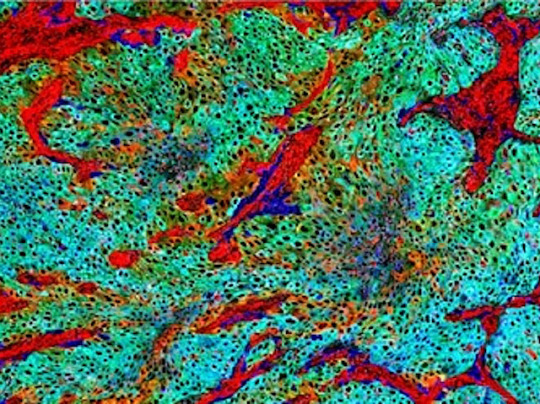
Malignant Evolution
Multi-pronged (whole-exome sequencing, RNA sequencing, and Imaging Mass Cytometry) approach characterises at the single-cell level the heterogeneity of upper tract urothelial carcinoma – cancers arising in the ureter and the kidney's 'pelvis' – from primary to metastatic
Read the published research article here
Image from work by Kentaro Ohara and colleagues
Department of Pathology and Laboratory Medicine, Weill Cornell Medicine, New York, NY, USA
Image originally published with a Creative Commons Attribution 4.0 International (CC BY 4.0)
Published in Nature Communications, March 2024
You can also follow BPoD on Instagram, Twitter and Facebook
#science#biomedicine#immunofluorescence#biology#oncology#cancer#urothelial cancer#kidney#ureter#renal#metastasis
7 notes
·
View notes